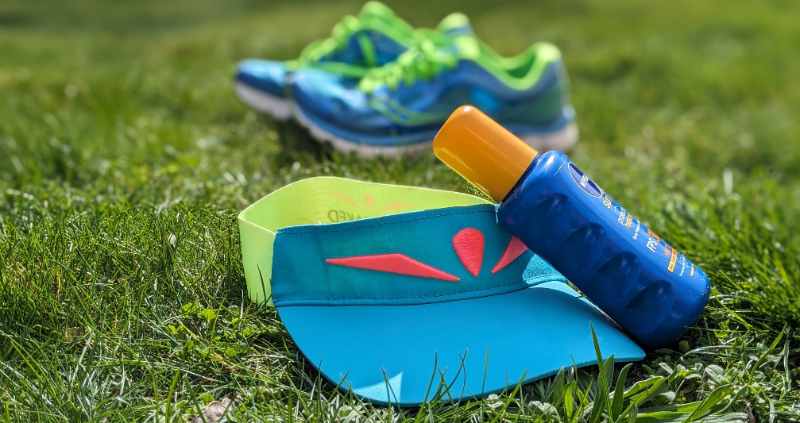Stryd Footpod Review -
My Experience of Training & Racing
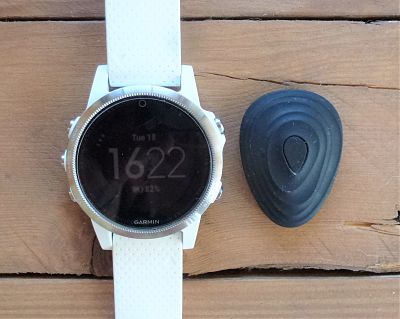 Stryd Footpod Review
Stryd Footpod ReviewHaving used my Stryd for more than a couple of years now, I feel ready to do a Stryd footpod review.
You may be wondering if the Stryd footpod can help you be a faster or better runner so hopefully my experience will help you understand or to decide on whether to invest in one.
About me, the reviewer
 Stryd Footpod review
Stryd Footpod reviewWhen I first heard about the Stryd Footpod, I didn't take much notice as I thought it was for elite athletes or runners of a certain 'young' age and performance level. However, the more I read about it, the more intrigued I became and the more I felt that it could be a really useful running tool for anyone who wants to improve their running or racing.
I am not a super fast, young, elite runner but rather I am a 58-year-old female who took up running around 8 years ago.
I run mainly for pleasure but also do competitions in all distances but mainly 10km to marathon. Around me are mostly trails, so I was interested to see how the Stryd footpod would cope with lots of ups and downs and bumpy terrain.
Until I got my Stryd I had been doing MAF training (training by heart rate). I have had good succes with heart rate training so I felt this was going to be an interesting comparison. I hope that you find this Stryd footpod review useful.
What does Stryd Measure
Most runners tend to measure progress and ability by looking at pace but Stryd is all about using and measuring running power. The more power you can exert and the more efficiently you can use that power, the faster you will be.
The Stryd footpod measures your running power and then shows you how to increase it so that you can become a better and more efficient runner.
The STRYD footpod measures your running power and then shows you how to increase it so that you can become a better and more efficient runner.
Setup & Charging - Stryd footpod review
The Stryd footpod is a small, black, tear shaped pod that you wear on your shoe. If you are a competitive cyclist, you may well have heard of power meters but for runners it is a pretty new concept.
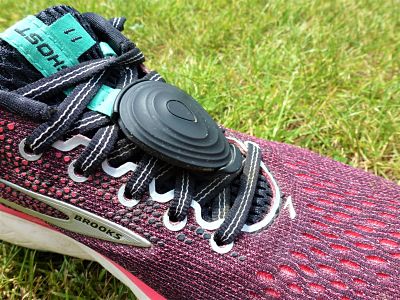 Stryd Footpod Review - Attached to my shoe
Stryd Footpod Review - Attached to my shoeThe pod weighs about 7 grams and attaches to the laces of your shoes via a mini bracket. You receive 2 brackets (black and orange).
You need to be careful that the small hole at the tip (front end) of the bracket is not obscured as that is what allows Stryd to measure the impact of wind on your run.
My one suggestion to Stryd, is that I would have liked the pod to be available in different colours as it is quite hard to spot on your shoe and also potentially easy to lose at the bottom of your bag.
I use Stryd along with my Garmin Fenix 5S. It will work with any android phone or iPhone and most running watches.
Setting up and pairing the Stryd with my Garmin was thankfully pretty straightforward. I just followed the emails and I was good to go pretty much straight away.
Charging is very simple. You just attach it to your computer via the USB cable and when the light goes out, it is done. I haven't timed how long it takes to charge but it seems quite quick (a couple of hours) and the battery life is about 20 hours. That is great as I find I can easily go 2 weeks without charging. You can check how much battery is left by placing your phone next to your Stryd and then checking the phone app. I'm not sure how accurate it is but it is a good guide.
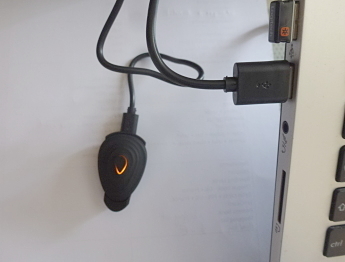 Stryd Footpod Review - Charging
Stryd Footpod Review - ChargingThe Stryd links to my running watch and so all the information that it collects can be seen either in Garmin Connect and in the online Stryd Power Center.
I have also managed to link Garmin Connect to Final Surge so that all my stats show up there too. In fact it can link with a variety of other apps including Strava, Training Peaks, Zwift and more.
There are a variety of different apps which you can download onto your GPS watch that work with Stryd. Apps are not my strong point so I was pleasantly surprised to find that even I could understand them!
Stryd recommends either the Stryd Zones data field or the Stryd Workout App. The first one is perfect for adding a power data field to my Garmin and the second is great for doing structured workouts when I'm using a power training plan. As a side note, Stryd have some pretty good training plans.
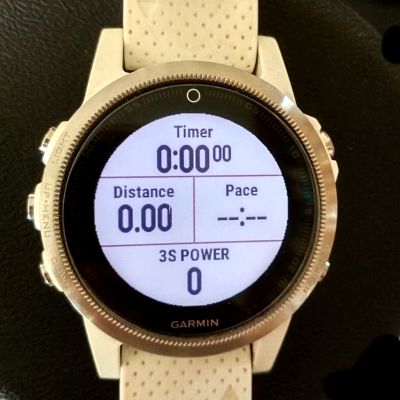 Stryd Zones Data Field app connected to Garmin Fenix 5S
Stryd Zones Data Field app connected to Garmin Fenix 5S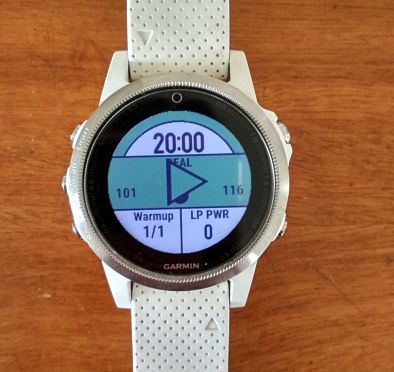 Stryd Workout App - Stryd footpod review
Stryd Workout App - Stryd footpod reviewFirst Use - Stryd Footpod Review
When you first get your Stryd, you will wonder how such a small, unassuming piece of equipment can do so much. Well it does, but all out of sight. It doesn't even have an on/off switch!
The footpod is triggered by motion, so as soon as you move, it starts recording internally with or without a GPS watch. This is kind of handy, as if you forget your watch or your watch runs out of battery mid-run, there is a way to get the recorded info off of Stryd and into your account.
I was advised not to worry about the data for a few weeks but just to run as usual. The more you run, the more information that you will give it and so the more it can begin to create a profile that is personalized to you.
If you prefer, Stryd does have a 2 week intro to power training plan which is great for getting you to run a variety of runs that will feed data into your Stryd. Once the 2 weeks is up, Stryd should have enough data about you and it can start giving you insights into what you are capable of and how you can improve. To me this was hugely exciting and helpful.
Training Zones - Stryd footpod review
Once Stryd has enough reliable information, it will give you
your critical power (CP) number which is in general, the power in watts that you could hold for
anywhere between 40 - 70 minutes.
From your critical power (CP) number Stryd can then work out power training zones for you. This is similar to how you have zones in heart rate training or pace training.
There are 5 zones ranging from easy to repetition. Interestingly, I find that my power zones are in fact not that different to when I was using HR zones. This was kind of reassuring to me having been a HR training fan.
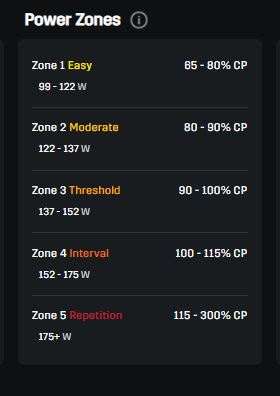 Stryd Power Zones
Stryd Power ZonesOne of the biggest hurdles I had to overcome is to get used to the fact that Stryd will not predict paces for me. It will only predict power. This means when I go out for a run, my aim is to maintain the planned power (in watts) irrespective of the pace.
Once I had got into my head that I needed to follow just one number - POWER - then it became so easy. I used to try and run a hill at nearly the same PACE as on the flat. It was always a bad idea and it always tired me quicker than it needed to.
By following POWER, my pace automatically adapts depending on the terrain, slope, weather and how fatigued I am.
Stryd will update your CP automatically so long as you feed it the right information. In other words you need to do certain types of runs every 4 - 6 weeks. These runs include "all out efforts" for 10-30 seconds, 2-5 minutes, 10+ minutes. It doesn't sound too bad but believe me, an "all out effort" no matter the time, I find pretty gruelling.
Collecting Stats - Stryd footpod review
Where all the stats and info happens is in the Stryd Power Center.
Like most runners, I love to look at my stats post run. Did I run faster or slower, was my heart rate too high and much elevation was that hill that I just killed myself on?
Before I got my Stryd, pace, distance, time and heart rate were generally all that I concentrated on. However with Stryd, I can now see how efficiently I ran, whether I have improved and how I can improve. This is where Stryd has a big advantage over just your regular running watch.
I've always wondered how I can improve but to be honest, without a coach I didn't know where to start. My weak points I just tended to ignore and hoped that they would go away. Of course, that never happened and I either got injured or I just didn't seem to improve.
As I've got older, I've realized that my body is unfortunately less efficient, needs more stretching and I am slowing down. So, if I can be guided on where I could improve my running, then I am all ears.
Stryd is now my coach :).
I'm not going to lie in that when I first started, there was a lot to take in. There was a lot of terminology that I was not familiar with and I felt a real dumbo. However bit by bit I've got there and in all honesty you don't need to understand everything.
Below are some of the features that you will find in the Stryd Power Center:
Power Duration Curve
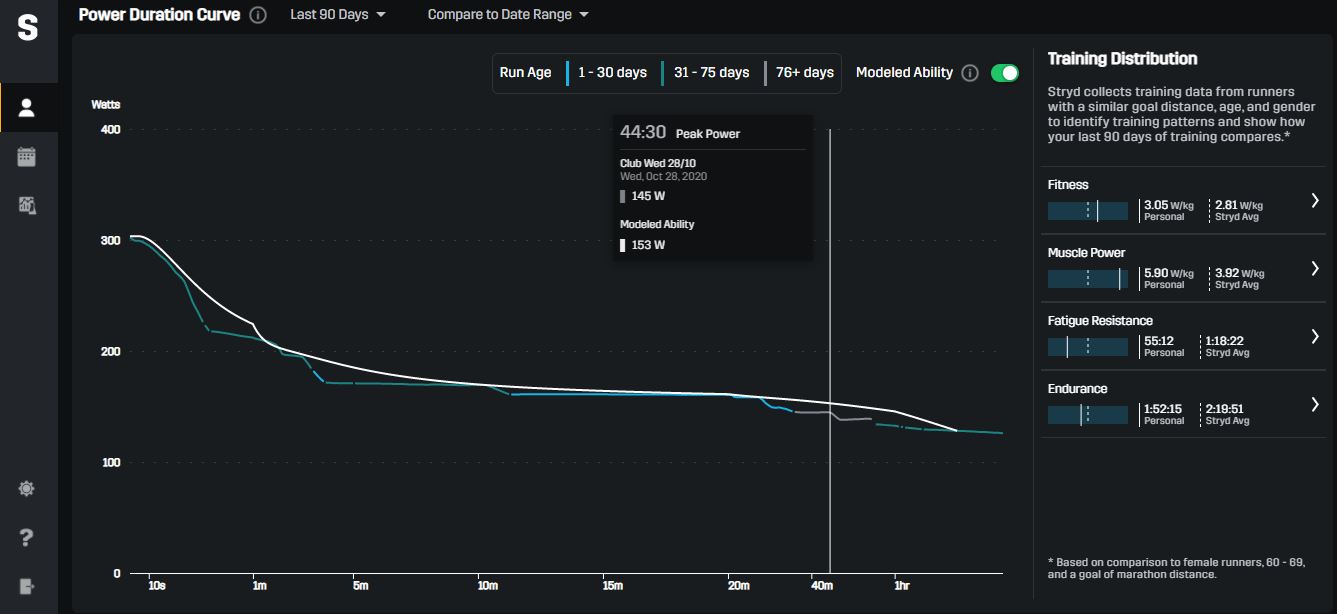
The Power Duration curve (PDC) takes your runs over the last 90 days and uses that information to show you what you have achieved and what you are capable of running at different times.
To the right of the screenshot you can also compare yourself to other Stryd users who are in the same age bracket/sex as you and who are training for the same distance. Being anonymous, there is no need to worry about where you are in the legue table!
Running Stress Balance
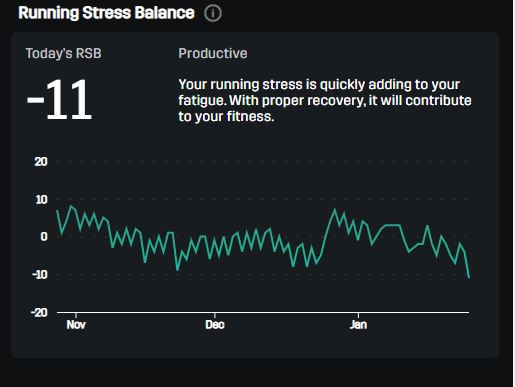 Running Stress Balance
Running Stress BalanceThis graph helps me to know if I am overdoing things or when I could push a but harder. It is great in helping me dial down as I do have a history of injury.
Workout View
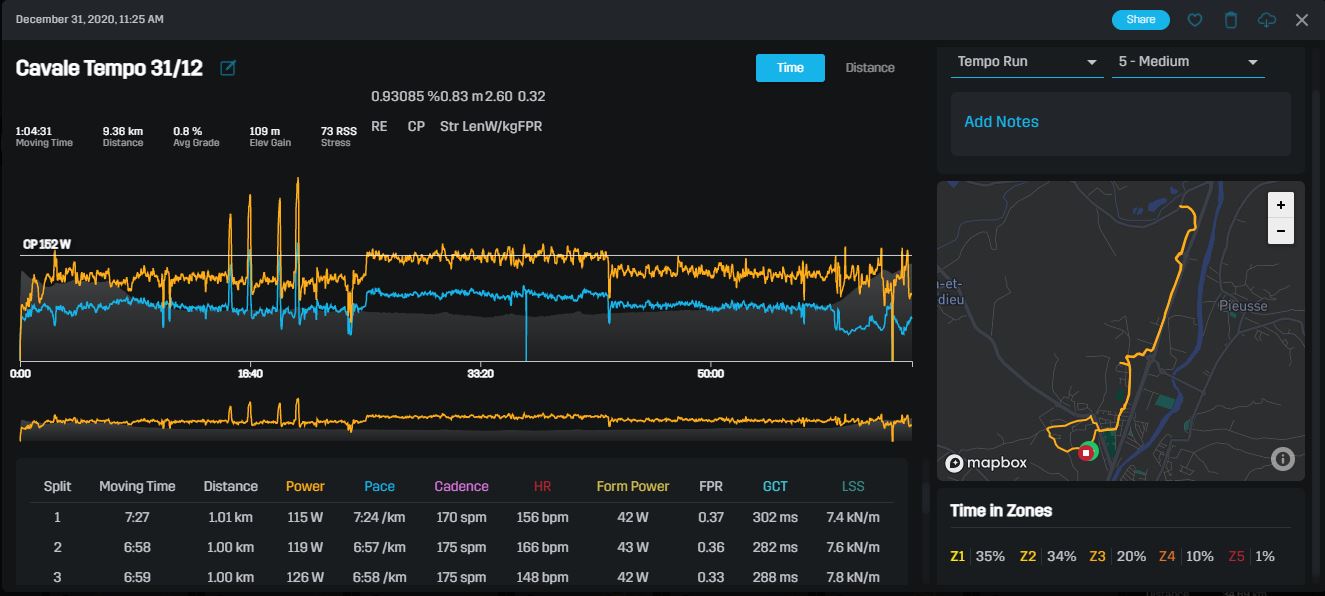 Stryd Workout View
Stryd Workout ViewAfter each run, you can view all the power stats plus pace, heart rate, cadence, elevation, leg spring stiffness and more.
As I said before, it is a bit of a learning curve to start with but there are lots of good Stryd blog posts to help you out.
Race Predictor Tool - Stryd footpod review
My big aim in my last marathon was to break 4 hours so the race predictor tool was pretty exciting to see. Not only did it tell me what power to run but it also told me what time it thought I could finish it.
At first I was a bit unsettled as I had to run by power instead of pace but then I reasoned to myself that the race power I was targeting meant that I was running at my true capability. Here's my race report.
Since that marathon in 2019, I have learnt a lot. I've used the time (lockdown and all) to really get to grips with Stryd and not to let my ego get the better of me.
In terms of racing, 2020 was a bit of a special year and I did very few races. I did do an 87km ultra but to be honest, I found it very difficult to use my Stryd as the terrain and the elevation was so unpredictable.
So for 2021 I am aiming again for another marathon and I hope to finally break 4 hours.
How Stryd has Helped Me - Stryd footpod review
- Racing has become enjoyable!
- I used to struggle in races as I either started too fast or have been overambitious in what I am capable of. Racing by power shows me how fast to set off, if I am over doing it and when I can push harder. I think of it like my pacer!
- I no longer fear hills. Before using power, I used to charge up hills trying to keep my pace up and then I would die at the top. With Stryd, I just run the hill at the recommend power and then when I get to the top I can carry on running as I am not exhausted.
- Stryd’s distance accuracy is top notch. Unlike my Garmin watch which uses GPS, Stryd uses accelerometers. These are not affected by buildings, trees, weather and so on. Many times, my Garmin watch has not been able to pick up my location and distance if I am say in a forest or shaded trail. Stryd is spot on all the time.
- I have learnt a huge amount on how I can be a better runner. For a long time, I felt stuck in a rut of not knowing how to get faster and how to become more efficient. Now I can see areas that need working on and how to do it.
- I love that Stryd shows if I am over-training by giving me a daily running stress score. I have not had an injury since running by power.
I hope that my Stryd footpod review has helped and if you are interested in getting a Stryd, they are only sold directly from the STRYD website.
(Stryd footpod review : updated January 2021)
